Global Gateway
Brand
Global Gateway
Role
UX Designer and Researcher
Target Group
Chinese students studying and living in the UK
Contribution
Research, insights, analysis, concept, testing, design
Time
8 weeks
Brief
Design a user-friendly mobile-only app that helps Chinese students studying in the UK adjust to the cultural shock and adapt to their new home, fostering a sense of belonging and community.
Outcome
Arriving in the UK can be a culture shock for Chinese students. This app offers a lifeline, providing resources to ease the transition. From articles on British culture, traditional English recipes, and, crucially, connect with locals at events or one-on-one on or offline for language exchange and socializing. This app empowers students to thrive in their new home, building community and fostering cultural understanding.
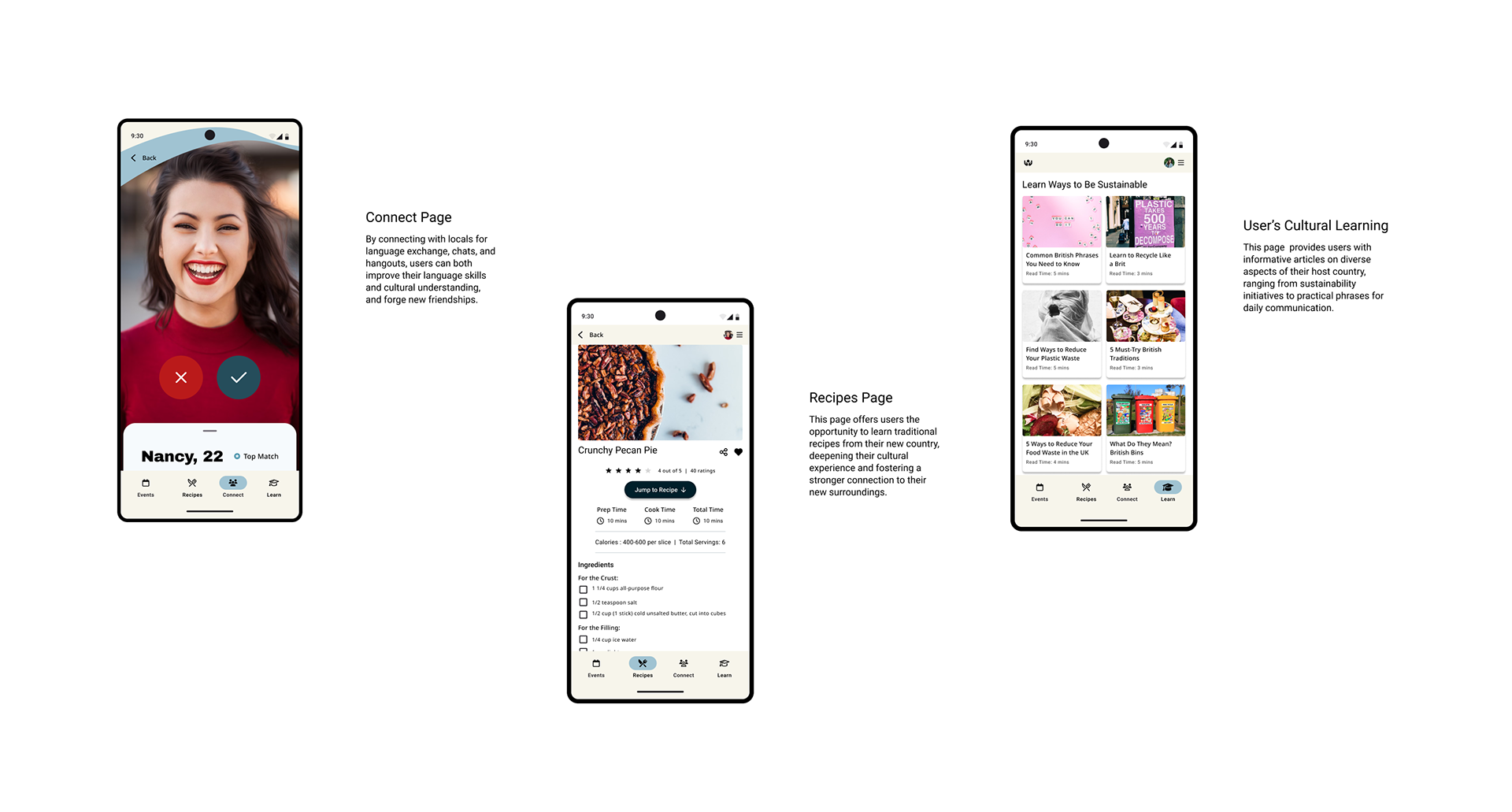
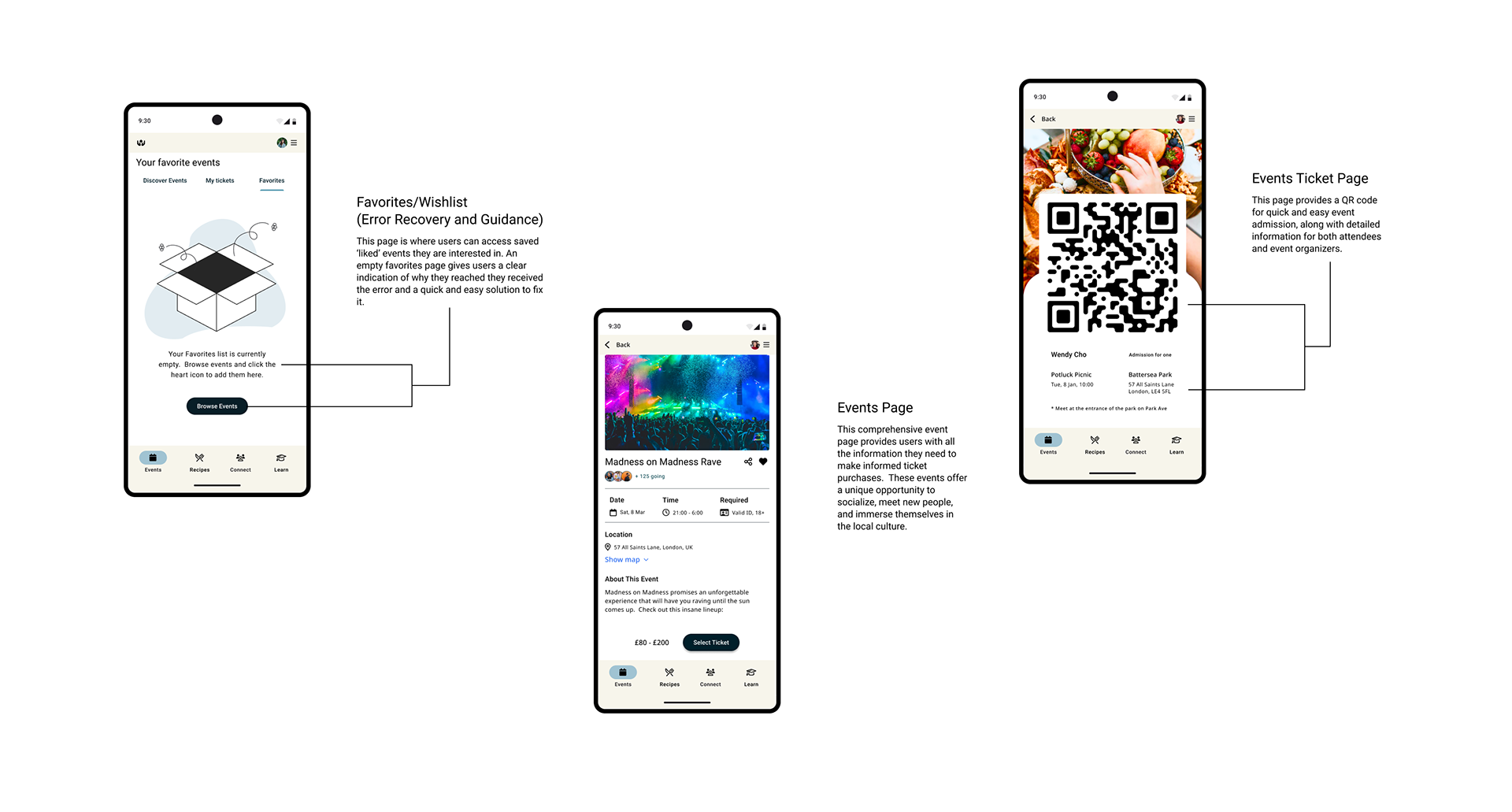
1. Empathize
Primary & Secondary Research Methodologies
We employed a two-pronged primary research approach, combining Interviews with Contextual Observations, to achieve Triangulation (validating quantitative behavior with qualitative motivation).
1. Interviews and Secondary Research (The "Why")
Rationale: Interviews with 10 participants were essential to move beyond surface-level complaints and uncover the underlying emotional and cultural reasons for their struggles. We needed to answer crucial questions like: "How do they cope with culture shock?" and "What do they wish they had access to?"
Rationale: Interviews with 10 participants were essential to move beyond surface-level complaints and uncover the underlying emotional and cultural reasons for their struggles. We needed to answer crucial questions like: "How do they cope with culture shock?" and "What do they wish they had access to?"
Purpose: This method provided the direct quotes, deep fears, and personal stories that revealed core Pain Points, such as the struggle to speak English and the desire to participate in British culture without abandoning their own.
2. Contextual Observations (The "What")
Rationale: Observations were critical for confirming that what users said in interviews matched what they did in real life. We specifically focused on behavioral contexts like food shopping and social gatherings (joining a traditional gathering and an English gathering).
Rationale: Observations were critical for confirming that what users said in interviews matched what they did in real life. We specifically focused on behavioral contexts like food shopping and social gatherings (joining a traditional gathering and an English gathering).
Purpose: By observing these events (with 11 participants), we uncovered subtle, non-verbal struggles—like wasting money on unfamiliar food or struggling to initiate conversation in English—that the participants might not have articulated clearly in an interview. This provided the objective evidence needed to back up our qualitative findings.
Secondary Research
Sampling Selection Process
Participant Board
Research Methods
Observation notes
2. Defining Findings
The synthesis phase transformed diverse primary research data—collected through interviews, observations, and detailed log-taking—into validated, thematic insights:
Affinity Mapping: All qualitative data (quotes, observations, and pain points) was grouped to establish clear thematic clusters. This revealed critical areas of struggle, including Social Isolation (lack of British contact), Food and Navigation Anxiety (unfamiliarity with UK groceries and cooking), and the Cultural Identity Conflict (participating in British life without abandoning Chinese heritage).
Identifying Insights: The synthesis moved beyond simple pain points to define the "why." For example, the observation of struggling to speak English was synthesized into the insight that the problem is not a lack of academic knowledge, but a Social Confidence Deficit caused by a lack of practice opportunities.
Defining Opportunities: The final synthesis step was translating the verified pain points into clear Opportunities. This directly led to the conceptual solution of an app, with features designed to solve the core issues:
Local Connections/Events: To address Social Isolation and the Practice Gap.
Recipe/Cultural Guides: To address Food and Cultural Navigation Anxiety.
This structured synthesis ensured the final solution was explicitly anchored in the verified, human-centered needs of the students.
Key Findings from Interviews and Observations
Defining Findings
Pain Points
Social Isolation: Students struggle with loneliness and social norms, and lack opportunities to meet British locals for practice and connection.
Linguistic Practice Gap: Students struggle to speak English because they lack consistent opportunities to practice with native speakers.
Cultural Uncertainty: Students struggle with various aspects of British daily life, including understanding local food, cooking habits, and how to immerse themselves fully in the culture.
Linguistic Practice Gap: Students struggle to speak English because they lack consistent opportunities to practice with native speakers.
Cultural Uncertainty: Students struggle with various aspects of British daily life, including understanding local food, cooking habits, and how to immerse themselves fully in the culture.
Challenges & Processing Gathered Information
Initially, I realized my understanding of Chinese culture was limited. This necessitated multiple, deeper rounds of research and cultural immersion. By embracing an iterative approach, I was able to systematically synthesize complex data and ultimately build a comprehensive picture made of many puzzle pieces of how students truly struggle to adapt to British life. This allowed me to fully and effectively empathize with Chinese students at every step of my design thinking process.
Puzzle Pieces in Research
Persona, Affinity Map, AEIOU
3. Ideation
Creating Key Insights
Initially, I realized my understanding of Chinese culture was limited. This necessitated multiple, deeper rounds of research and cultural immersion. By embracing an iterative approach, I was able to systematically synthesize complex data and ultimately build a comprehensive picture made of many puzzle pieces of how students truly struggle to adapt to British life. This allowed me to fully and effectively empathize with Chinese students at every step of my design thinking process.
Choosing Key Insights
The Design Thinking process moved from research synthesis into solution definition by transforming broad problems into actionable questions. This began with the creation of How Might We (HMW) Statements, which converted initial insights—like the struggle to reconcile Chinese social values with environmental behavior—into hundreds of focused opportunities. These HMW questions were then meticulously evaluated on a Matrix, plotting them against key criteria such as user desirability and the potential for high-impact results (like plastic waste reduction). This systematic prioritization process successfully identified the "Sweet Spot"—the most viable and impactful concepts—allowing the team to confidently transition into the Ideation phase with a clear mandate for solutions directly anchored in the validated needs of the users.
Creating and Choosing the best HMW Statements
HMW Matrix Sweet Spot
Rationale for Key Features:
The final features were designed to directly address the core struggles identified during the research: the cultural uncertainty, the social isolation loop, and the linguistic practice gap.
Cultural Articles & Recipe Section: These features target the pain points around unfamiliarity with British daily life (food, habits, norms) and the fear of abandoning native culture. The Cultural Articles provide foundational knowledge for participation, while the Recipe Section specifically helps overcome the struggle with British food and cooking habits, turning a point of friction into an approachable activity.
Local Connections & Local Events: These features tackle the most severe barrier: social isolation and the lack of English practice. The research showed students lacked opportunities to meet locals and were reluctant to initiate interaction. Local Connections and Local Events provide safe, dedicated channels to find British locals for language exchange and social mixing, thereby addressing the desire to "meet others that are not Chinese" and promoting the necessary English practice to break the isolation cycle.
Wireframes & Grid System
I created wireframes to map out how I would go about my solutions, often pulling from other successful, standard website structures. I also used a standard grid system to ensure consistency and familiarity for the user.
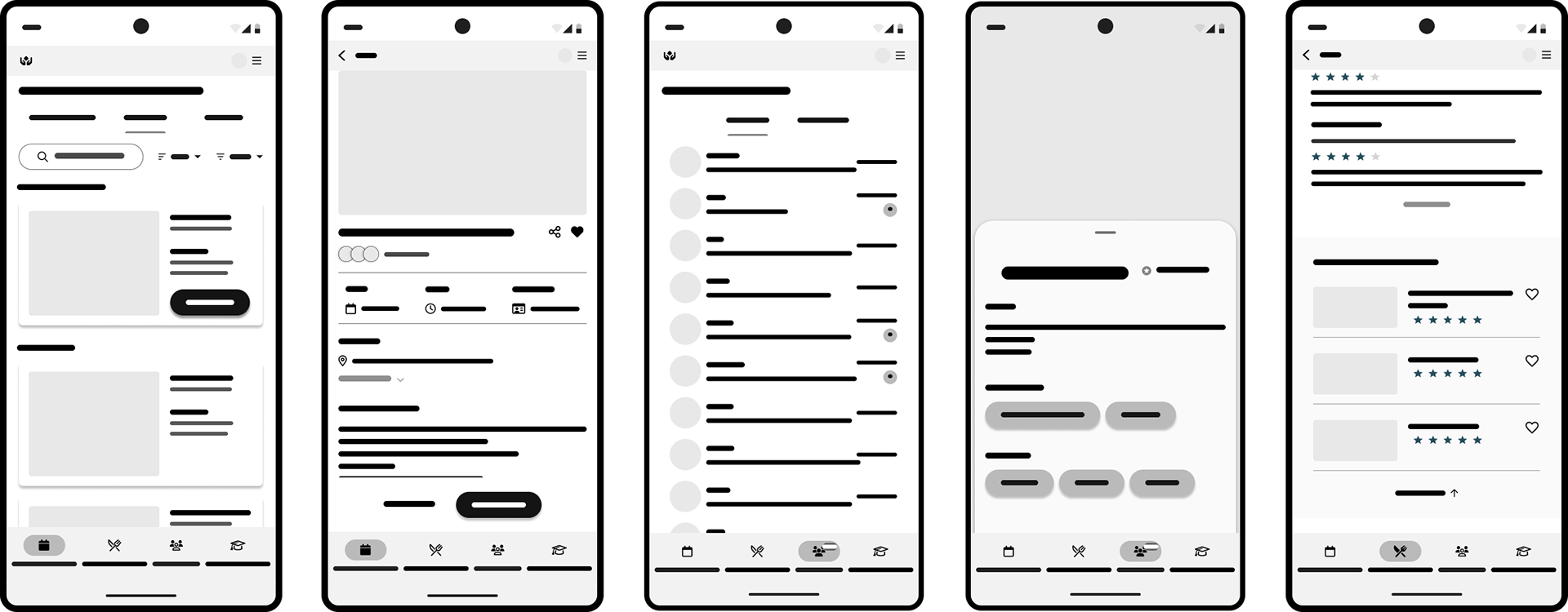
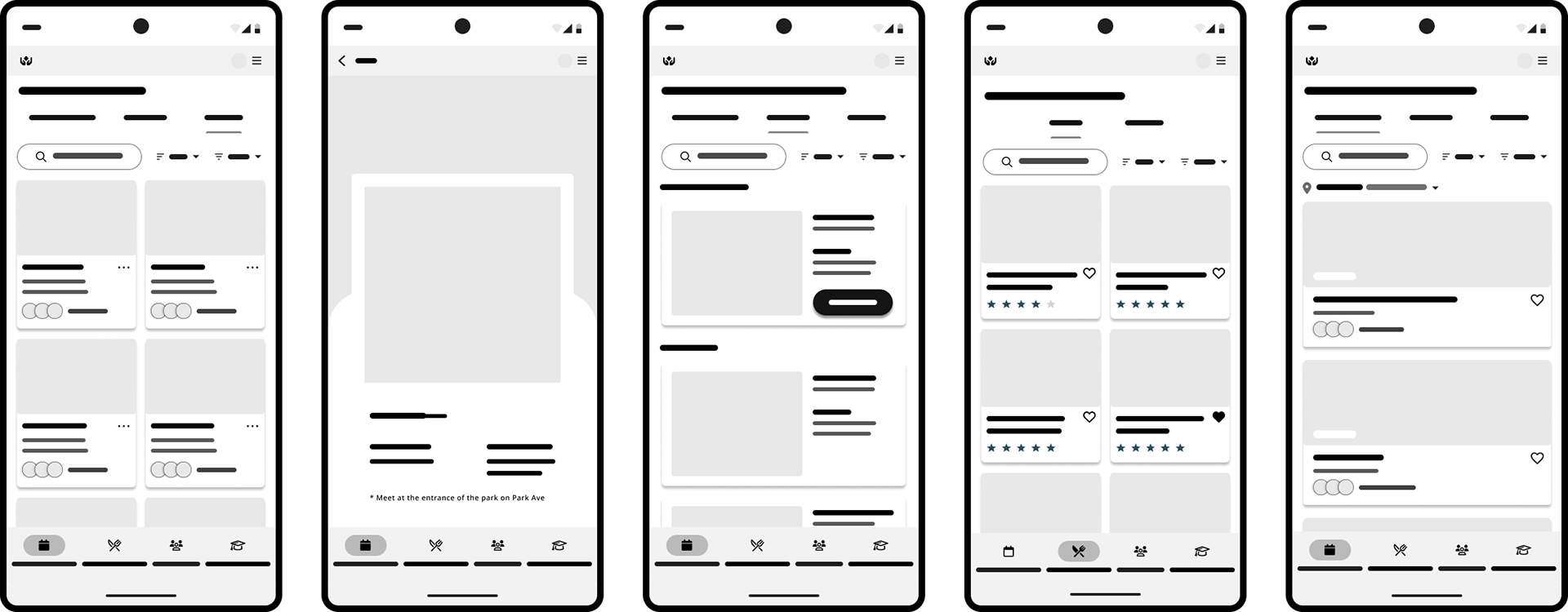
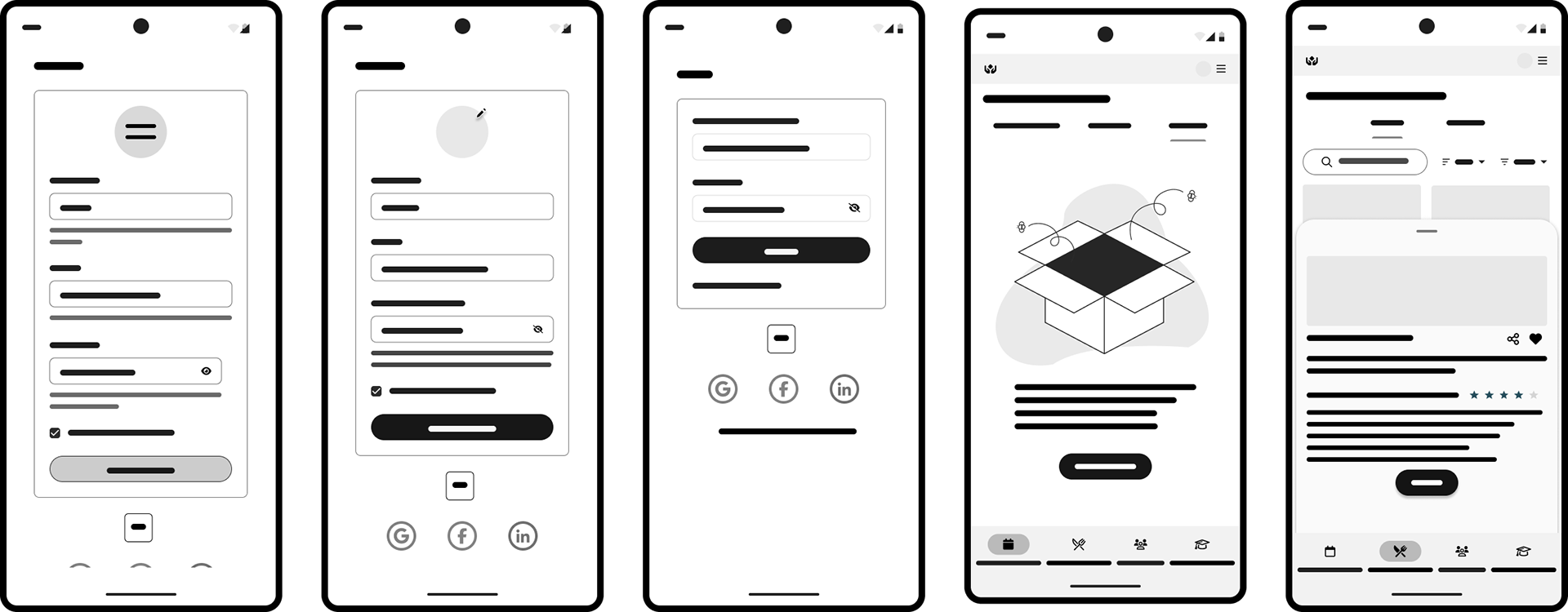
Wireframes & Standard Grid System
Utilizing AI & WCAG Protocols
To ensure the app's color palette effectively communicated the app's aesthetic and user perception goals while remaining accessible, Gemini was consulted and WCAG guidelines were implemented to accommodate users with color blindness.
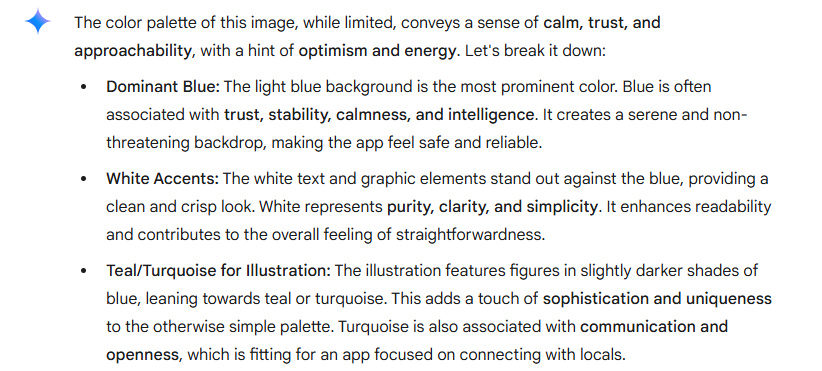
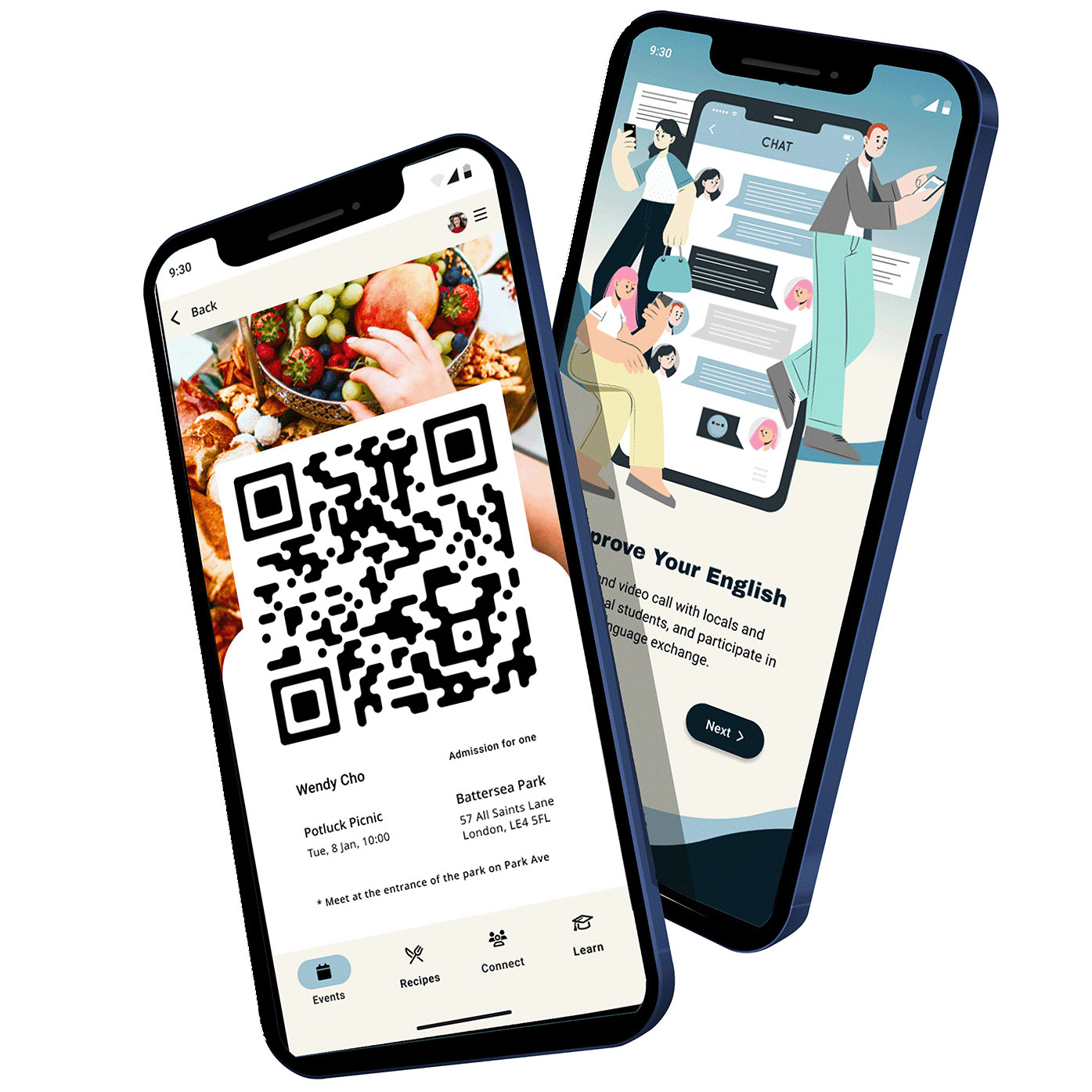
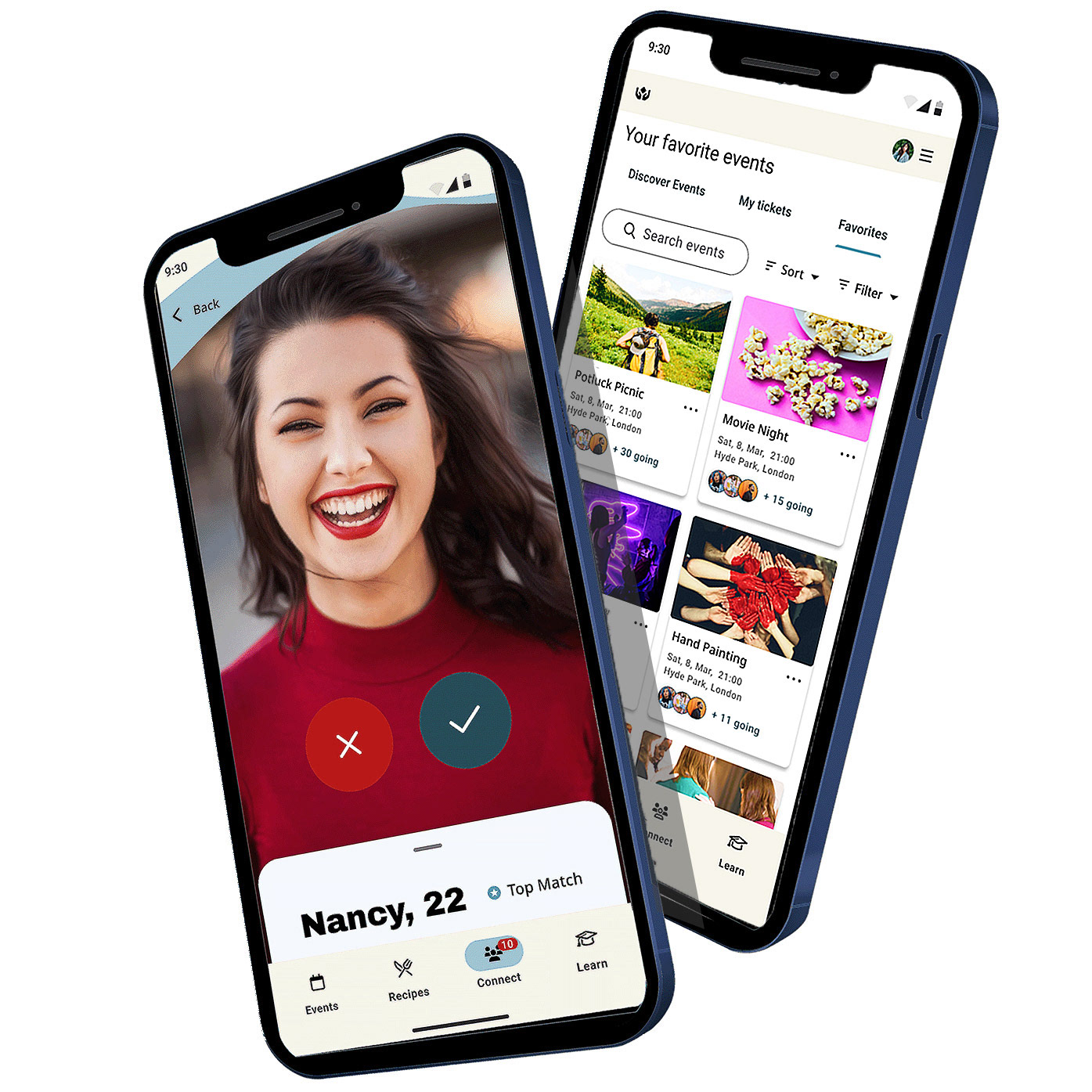

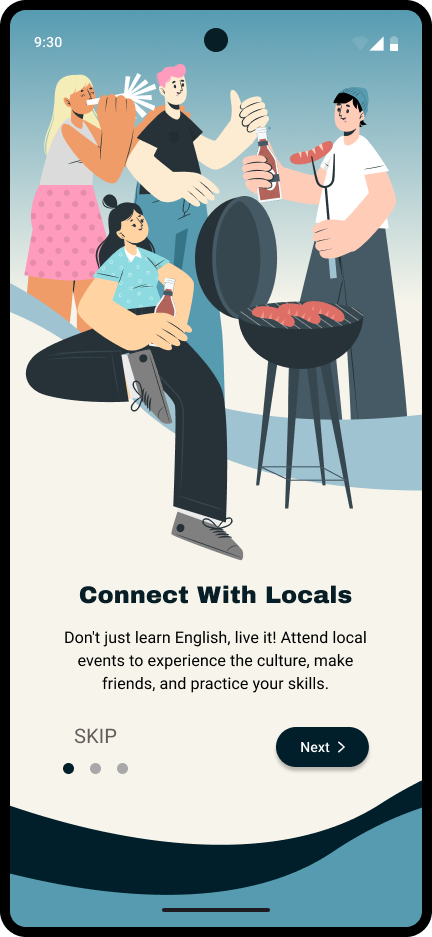
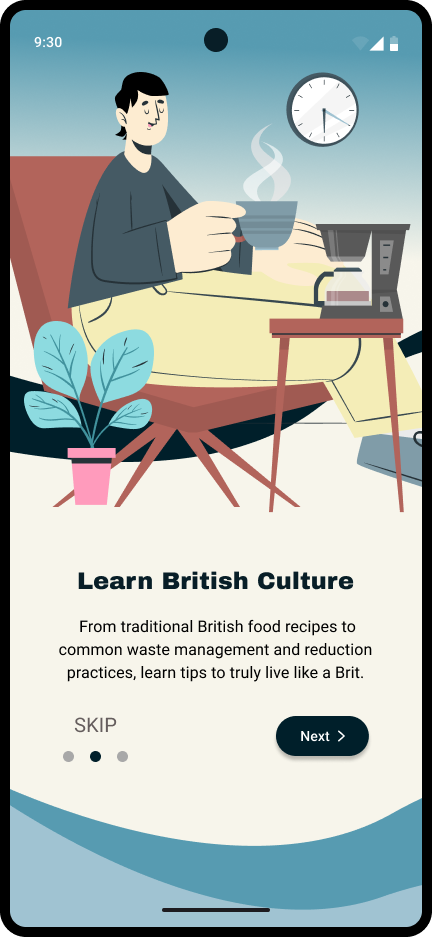
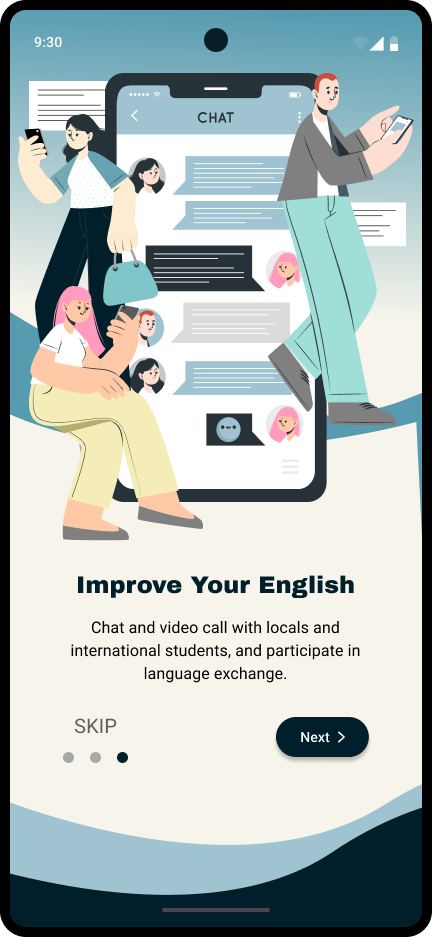
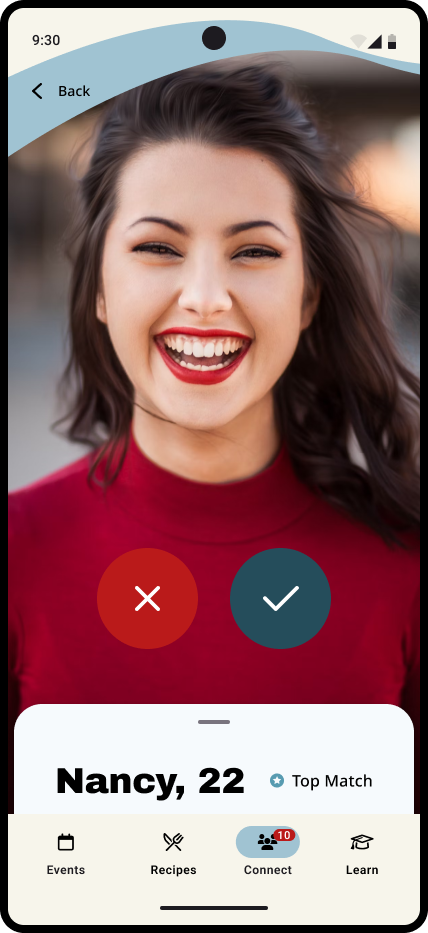
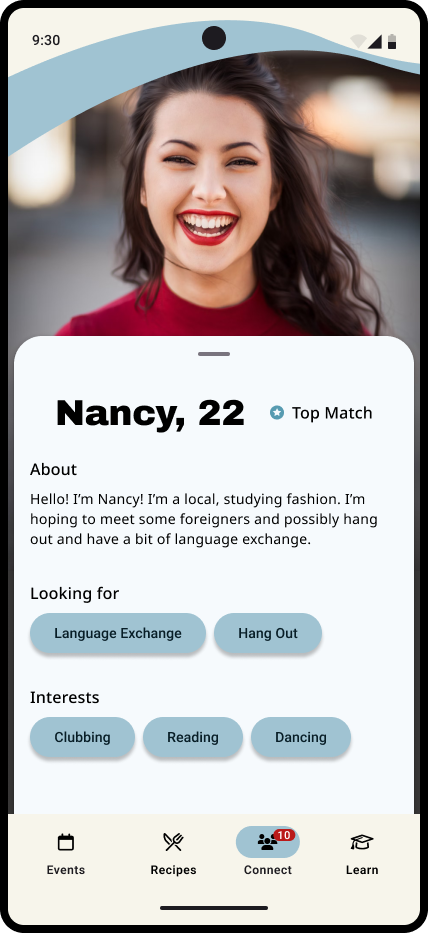
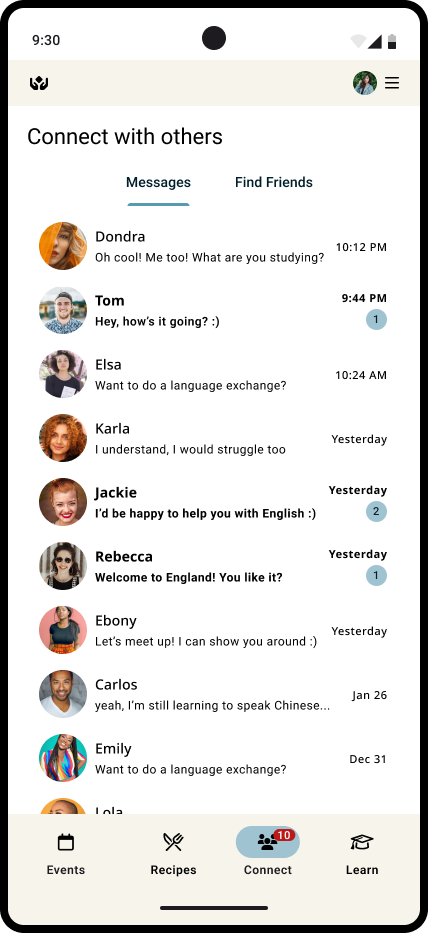
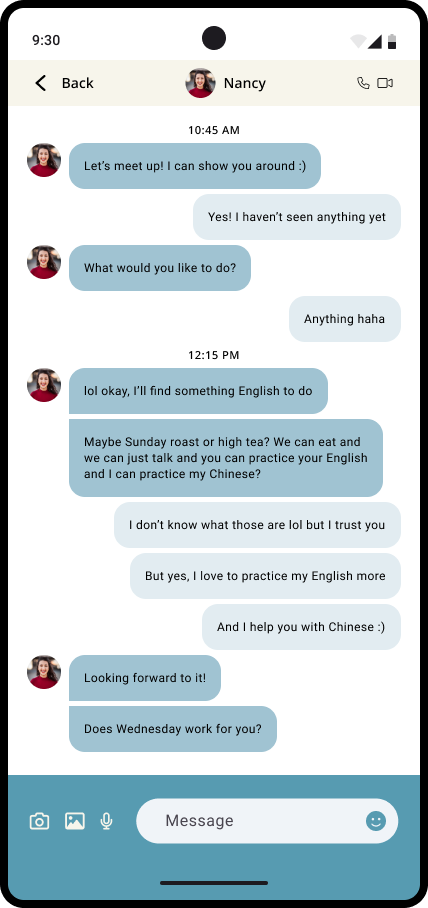
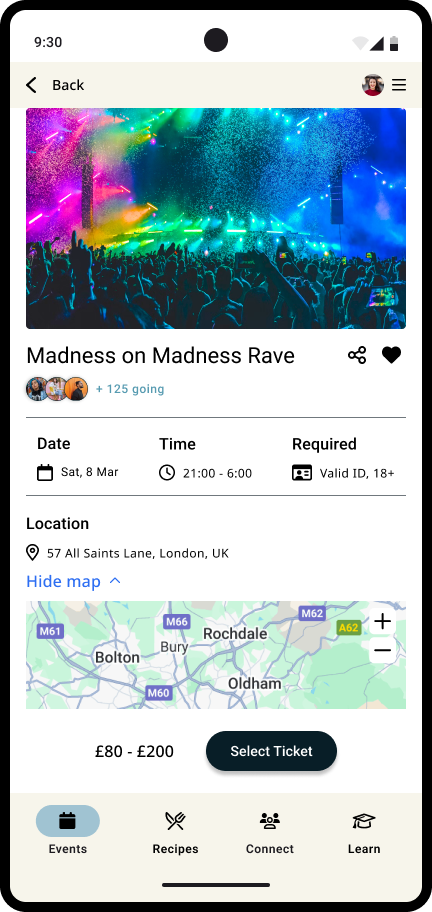
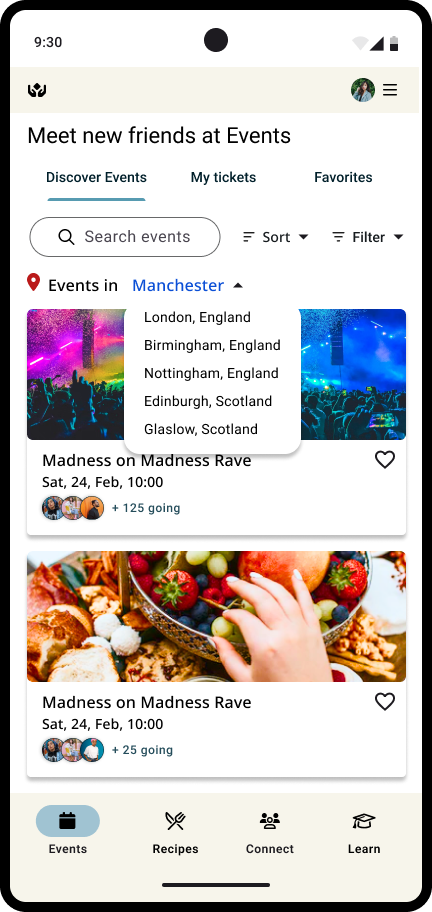
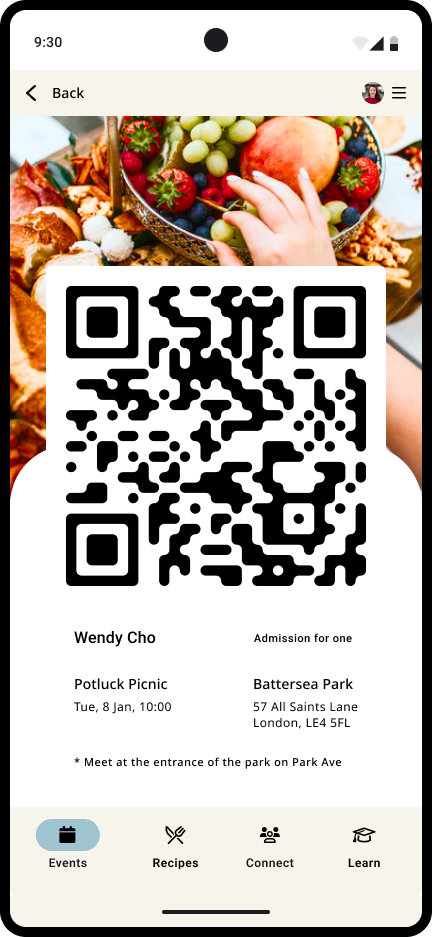
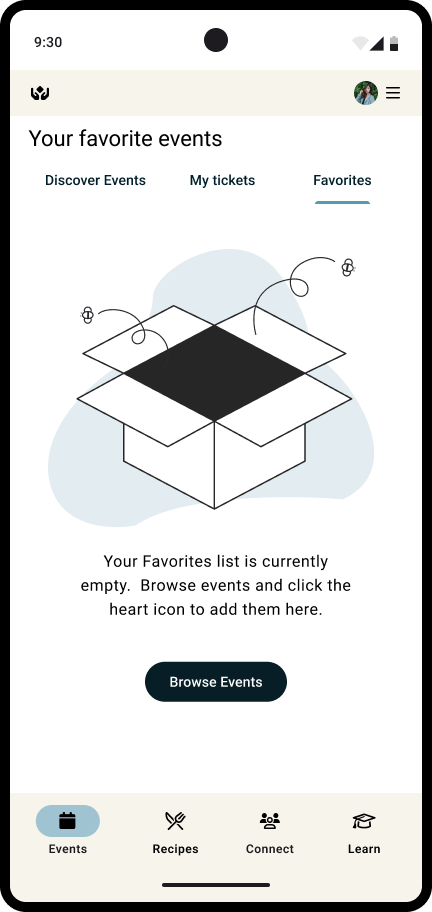
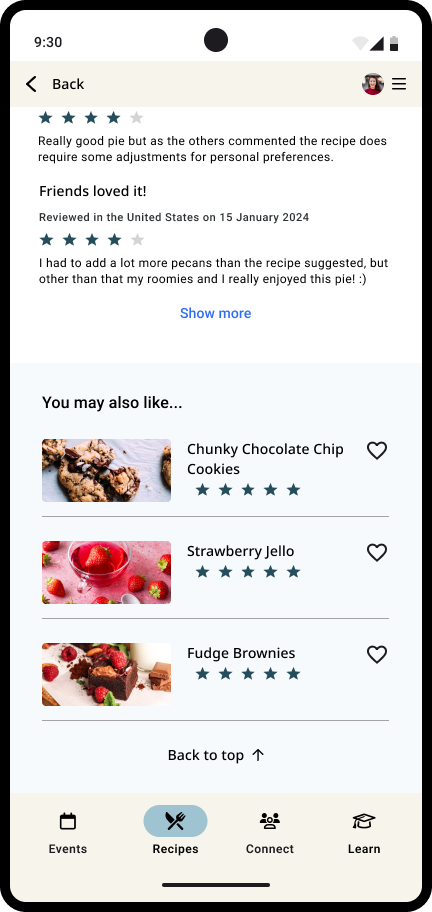
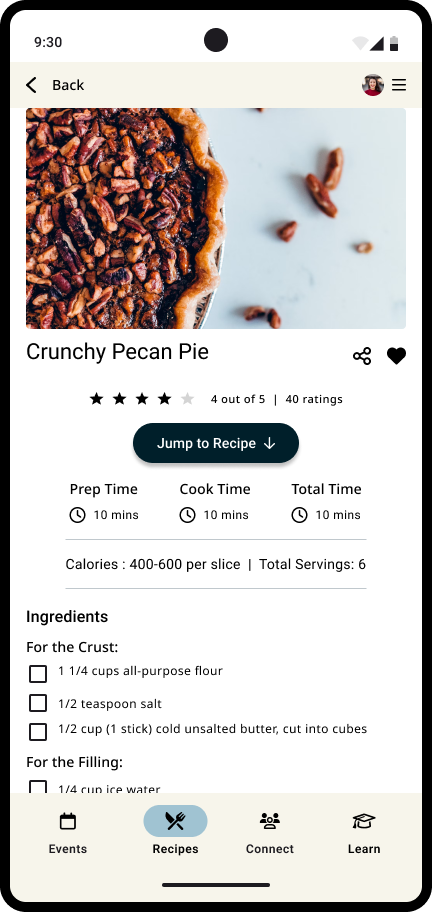
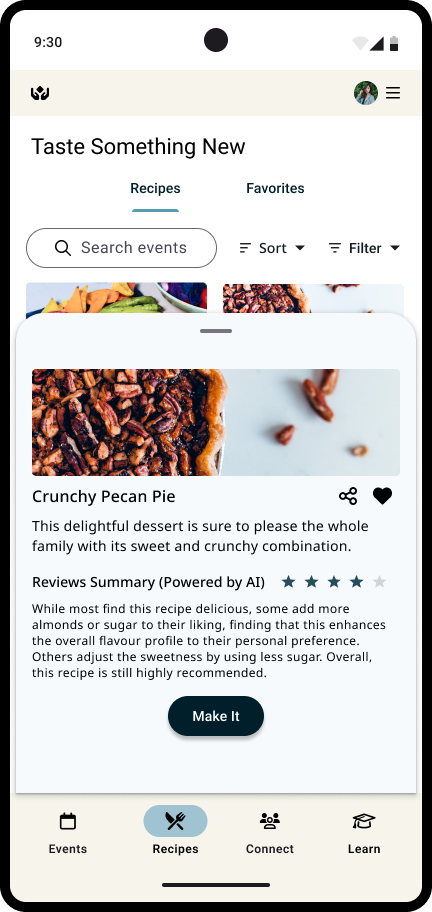
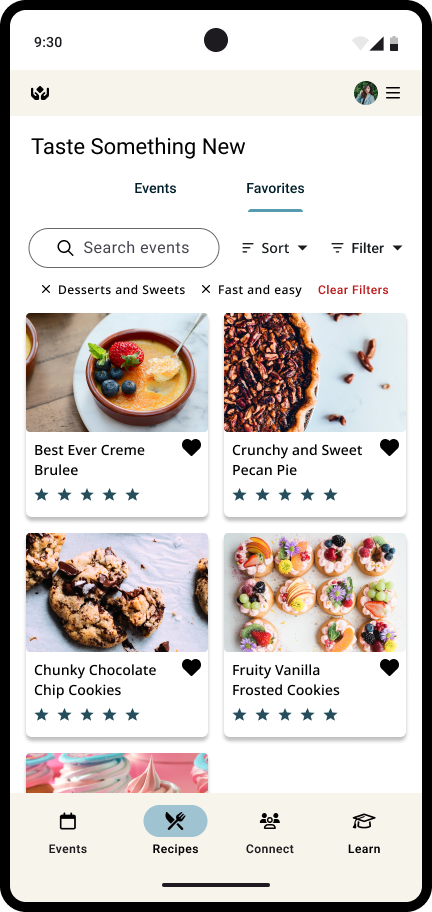
4. Prototyping
Connect Pages Flow
Recipes Pages Flow
Events Pages Flow
5. Testing
Usability Testing
The testing phase used two complementary methodologies: Think Aloud Protocols/Guerilla Testing and AI Biometrics (Eye Tracking).
1. Validation of the Social Experience
The Guerrilla Testing provided strong positive feedback on the core features designed to combat social isolation. Users "enjoyed the social aspects" and found the app "helpful and easy to use." This validated the decision to prioritize the Local Connections and Local Events features as the foundation for cultural integration.
The Guerrilla Testing provided strong positive feedback on the core features designed to combat social isolation. Users "enjoyed the social aspects" and found the app "helpful and easy to use." This validated the decision to prioritize the Local Connections and Local Events features as the foundation for cultural integration.
2. Refining Content and Focus
The testing also provided essential Negative Feedback, primarily concerning the "Learn" (Cultural Articles) section. Users found the articles to be less exciting and interactive than the social functions.
The testing also provided essential Negative Feedback, primarily concerning the "Learn" (Cultural Articles) section. Users found the articles to be less exciting and interactive than the social functions.
Refinement: Based on this feedback, a core solution was to remove the passive 'Learn' tab entirely and instead integrate cultural learning through active, social means (events and interactive recipes).
Contextual Adjustments: Recognizing that the primary user group (university students) operates on a budget, the recipes were refined to focus exclusively on simple, cheap meals, directly addressing the user's economic constraints.
3. Eye Tracking for Design Confidence
The AI Biometrics (Eye Tracking) involving 100 participants provided quantitative validation, confirming that the initial design had high "Excitedness levels" and that the users' focus was correctly placed on the intended solution elements. The absence of negative feedback regarding design or navigation confirmed that the User Journey and interface were already intuitive, allowing the team to move forward with confidence in the app's overall structure and flow.
The AI Biometrics (Eye Tracking) involving 100 participants provided quantitative validation, confirming that the initial design had high "Excitedness levels" and that the users' focus was correctly placed on the intended solution elements. The absence of negative feedback regarding design or navigation confirmed that the User Journey and interface were already intuitive, allowing the team to move forward with confidence in the app's overall structure and flow.
Usability Testing Methodologies
Personal Reflection
This project presented significant personal and professional challenges. As an American, I was initially confronted with potential subconscious biases stemming from the ongoing geopolitical tensions between the US and China, which could lead to response effects. To ensure the integrity of my research, I proactively addressed these biases, a crucial practice I now integrate into every project.
Furthermore, I encountered unforeseen challenges throughout the project, requiring me to adopt a patient and iterative approach. I learned to embrace the unknown, let go of preconceived notions, and rely on thorough research to uncover valuable insights.
Ultimately, this project significantly enhanced my professional growth by fostering open-mindedness, patience, and resilience – qualities essential for a successful UX Designer.









